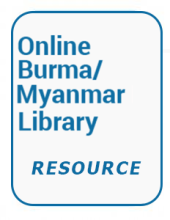Land Library
Welcome to the Land Portal Library. Explore our vast collection of open-access resources (over 74,000) including reports, journal articles, research papers, peer-reviewed publications, legal documents, videos and much more.
/ library resources
Showing items 1 through 9 of 23.... In December 2015, representatives of governments, civil society organizations, Indigenous Peoples’ groups, and the private sector met in Paris for the 21st
Conference of Parties (COP 21) of the United Nations
... Myanmar’s forest and timber sector has been central to the country’s economy and society, particularly over the last century. Since the colonial era, timber has been a major export revenue earner to Burma/Myanmar and thus subject to much political debate (Bryant 1996).
This report presents a political-economic analysis of
land governance at the regional level, focusing on the
Mekong Region
This chapter aims to overcome the gap existing between case study research, which typically provides qualitative and process based insights, and national or global inventories that typically offer spatially explicit and quantitative analysis of broader patterns, and thus to present adequate evide
... This paper attempts to analyse the key aspects of reforms required to ‘democratise’ Myanmar's timber trade, and the political–economic interests contributing or obstructing reform.
..."This Working Paper examines options for improved sustainability and economic viability for community forest in Myanmar (See also Wode et al 2014). It was prepared under an EU-FAO Regional FLEGT Programme project implemented by Fauna & Flora International that is
... The first commercial small-scale oil palm plantations were introduced to Myanmar in 1926 covering 120 ha. In the 1980’s the European Economic Community and Swiss
... This study was intended to find out the benefits of forests, especially for non-wood forest products (NWFPs), to forestdependent local people and the relation to their socio-economic status. Sampling (169 respondents) was chosen to be an equal distribution of household’s economic status.
As the economy thrives, we examine the plight of Ethiopians forced from their land to make way for foreign investors...the growth seen in agriculture, which accounts for almost half of Ethiopia’s economic activity and a great deal of its recent success, is actually being driven by an out of contr

